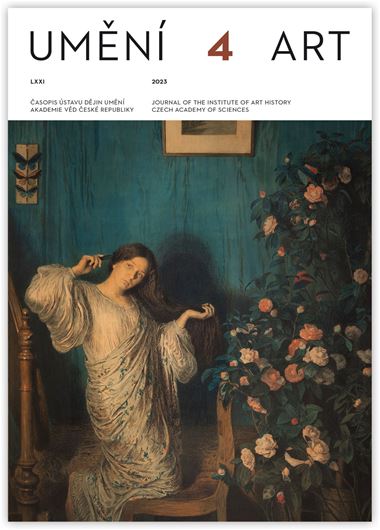Michaela Ottová
The Wingless Evangelists of Žitenice
Since the find of the so-called winged Evangelists in Žitenice, the literature on the subject has been exploring their subject-matter, function and placement. After the head of the fourth figure was discovered, the investigation of their origin in the no-longer-extant Romanesque building of the Church of SS Peter and Paul in Žitenice gained momentum. However, the group of statues seems to have been incorporated into the exterior of the building perhaps only much later, in the 17th century, following the return of the Žitenice estate to the Vyšehrad Chapter, which may have been related to Counter-Reformation strategies. Nor can their origin in the chapter church at Vyšehrad or Litoměřice be ruled out. Once the statues had been removed from the walls, lateral formations were identified cropping from the sides like wings, which provoked a discussion about their subject-matter and placement. Current research into the diverse manner of sculptural treatment has established later interventions on the so-called wings that had originally been smooth slabs linking the statues into an architectural whole, one which also included a technically demanding turned shaft. It is probable that formerly this had been an interior arrangement formed of a group of Evangelists, or apostles (flanking the Enthroned Christ), composed of panels framed by blind arcades, intended perhaps for a lectorium or gallery. An analogical ensemble has been detected in the choir screen from Gustorf (mid-12th century) produced in the so-called Workshop of the Brauweiler Cloisters in Cologne. There we find the sculptor of the Žitenice statues that are formally related to the relief from the so-called Judith’s Tower in Prague. The first specialized sculptural workshop in the third quarter of the 12th century emerged through the departure of master sculptors from Cologne to Prague, where it operated concurrently, not deriving its workshop style from the Cologne milieu with a much longer time gap. Who specifically initiated the transfer of a part of the experienced workshop or building lodge remains unknown. Various eminent figures close to the court of Vladislaus II come into consideration, among them the Vyšehrad provost Gervasius, or even Bishop Jindřich Zdík.
Author's email:
michaela.ottova@ff.cuni.cz
DOI: HTTPS://DOI.ORG/10.54759/ART-2023-0401
Full-text in the Digital Library of the Czech Academy of Sciences:
https://kramerius.lib.cas.cz/uuid/uuid:f37fd6c0-3c55-4881-adb7-8e1eabee633c
< back

